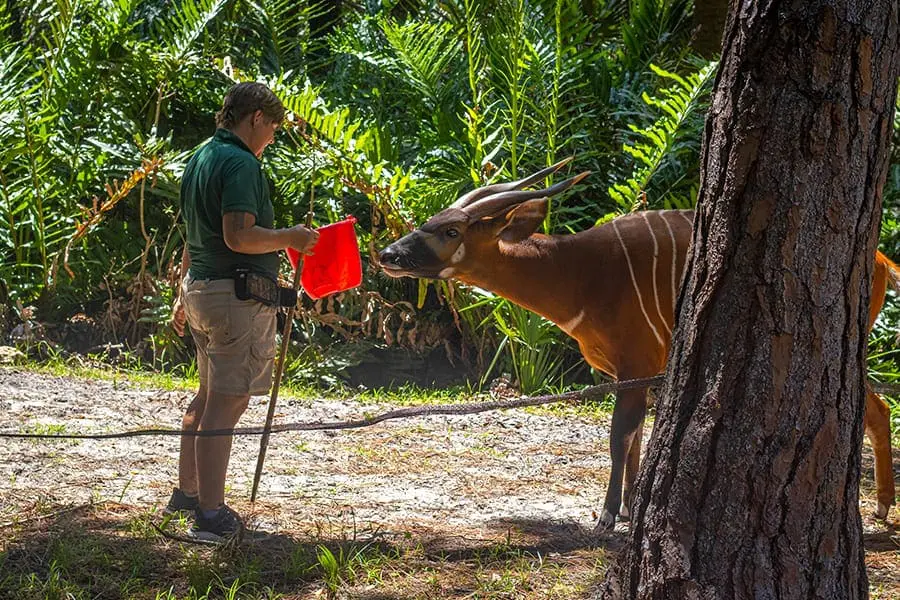

Clover’s first-ever calf is on the way.
Animal care staff are helping two animal moms through first-time pregnancies and preparing for the arrival of their little ones.
Mia the Baird’s tapir—who was paired with mate Antonio last year—was confirmed to be pregnant during an ultrasound exam on June 24. Based on the veterinarians’ observations (which included a good look at the fetus’s ribcage and heart), we expect Mia to give birth in August or September.
A temporary “baby gate” has been erected in the tapir yard to keep the calf from falling into the deeper tapir pool until they are old enough to swim. Antonio will soon be moved to another facility to free up space for Mia and her growing calf.
Because her mother could not properly care for her and Mia was hand-reared from a very young age, there is concern that Mia’s motherly instincts may not kick in. General curator Lauren Hinson and animal care supervisor Michelle Ferguson—both of whom are seasoned surrogate animal moms—are preparing for this possibility by studying literature about neonatal tapir care and stocking up on supplies like milk replacer.
Eastern bongo Clover is also pregnant, although her ultrasound exam (performed while she was sedated for a checkup) provided fewer clues as to when her calf will arrive. Keepers have begun training Clover to stand still for voluntary ultrasound exams so veterinarians can monitor her progress more frequently.
Because tapirs and bongo are both members of the ungulate group, keepers are looking for similar signs that indicate birth is approaching. The teats and udder will “bag up” as the animals begin to produce milk, and the vulva may cycle through swelled and relaxed states.
All animal pregnancies are exciting, but anticipation for these births is especially high given the status of these species in the wild. The International Union for Conservation of Nature lists Baird’s tapirs as endangered and eastern bongo as critically endangered.
Be sure to follow the Zoo on Facebook, Twitter and Instagram to be the first to hear about these new arrivals!
